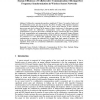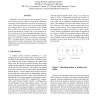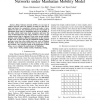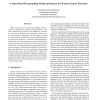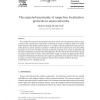856 search results - page 51 / 172 » Markov-based modeling of wireless local area networks |
SERSCISA
2010
Springer
13 years 7 months ago
2010
Springer
Collaborative communication produces significant (N2 where N is number of nodes used for collaboration) power gain and overcomes the effect of fading. With imperfect frequency sync...
LCN
2006
IEEE
14 years 2 months ago
2006
IEEE
IEEE 802.11 has become the main technology in local area wireless networks. However, performance anomalies, especially, in terms of fairness, arise in its use in ad hoc networks. ...
PIMRC
2010
IEEE
13 years 6 months ago
2010
IEEE
Delay Tolerant networks (DTNs) are one type of wireless networks where the number of nodes per unit area is small and hence the connectivity between the nodes is intermittent. In t...
PERCOM
2007
ACM
14 years 8 months ago
2007
ACM
Sensor networks are one important building block towards the realisation of context-aware applications. Suitable communication protocols and middleware solutions are necessary to ...
ALGOSENSORS
2004
Springer
14 years 2 months ago
2004
Springer
We consider three range-free localization protocols for sensor networks and analyze their accuracy in terms of the expected area of uncertainty of position per sensor. Assuming a ...
